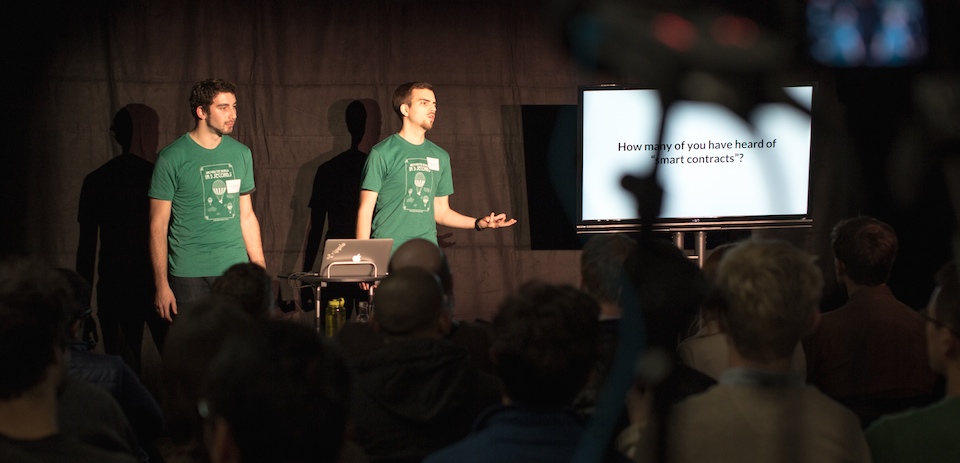The technology that launched Bitcoin could help broker-dealers cut costs. The catch: it could equally eat into revenue by automating services they currently charge for. Given the formidable obstacles to widespread adoption, it may prove to be as much a curse as a blessing.
We’ve already invested in over 50 Bitcoin companies, now we’re looking for Ethereum companies too.
Quelle: Boost VC Is Now Investing In Products Built Using Ethereum — Boost VC — Medium
Blockchain: regulatory technology or technology to regulate? Wednesday 2 March 2016, 12.30 – 16.00 European Parliament Brussels, Room PHS 7C 050 An event hosted by MEP Marietje […]
Quelle: Blockchain: regulatory technology or technology to regulate?
Ethereum has been a hot topic in the cryptocurrency world over the past few weeks as it’s been climbing the market cap ladder.
Quelle: Ethereum Now ‚Self-Sufficient for 4.5 Years‘ Says Buterin as Price Climbs – Bitcoin News
Explaining what Ripple is can be hard. To make things a little easier, we made a video!
For Ripple Labs, it’s an opportunity to share our vision of the Internet of money, show how Ripple fits into the equation, and highlight the tools and technology we’re building to make that vision a reality. It’s also a chance to show the world who we really are.
In the video, you’ll meet:
- Chris Larsen, co-founder and CEO
- Patrick Griffin, Head of Business Development
- Stefan Thomas, CTO
Produced by Alec Liu and Fabian Ruehle
Follow Ripple on Twitter
Explaining what Ripple is can be hard. To make things a little easier, we made a video!
For Ripple Labs, it’s an opportunity to share our vision of the Internet of money, show how Ripple fits into the equation, and highlight the tools and technology we’re building to make that vision a reality. It’s also a chance to show the world who we really are.
In the video, you’ll meet:
- Chris Larsen, co-founder and CEO
- Patrick Griffin, Head of Business Development
- Stefan Thomas, CTO
Produced by Alec Liu and Fabian Ruehle
Follow Ripple on Twitter

Nearly 300 Ripple enthusiasts attended Around the World in 5 Seconds.
Despite pouring rain, nearly three hundred guests attended Around the World in 5 Seconds, a special night of demos and celebration at the Ripple Labs office in downtown San Francisco, an event meant to engage the local community and share our vision of Ripple’s potential.
Attendees ranged from engineers, product managers, and senior executives from companies like Salesforce, JPMorgan Chase, Google, Ebay, Deloitte, Bloomberg, Microsoft, Wells Fargo, and Citi Ventures.

Signing in.
A series of product demos provided developers, investors, and industry leaders a tangible, hands-on experience for understanding how the Ripple protocol facilitates faster, cheaper, and more frictionless global payments than ever before.

Learning about the intricacies of real-time settlement and the internet-of-value.
One demo station was manned by Marco Montes, who you might recognize from the newly re-designed Ripple.com homepage. Marco is the founder and CEO of Saldo.mx, a novel remittance service that allows US customers to pay bills back in Mexico using the Ripple protocol.
Ripple Labs CTO Stefan Thomas and software engineer Evan Schwartz delivered two back-to-back tech talks on Codius, an ecosystem for developing distributed applications that utilizes smart contracts, to two jam-packed and enthusiastic crowds.

Stefan and Evan explain Codius.
The presentation represents the first of a series of talks as part of our mission to better educate the broader community about Ripple technology, behind the scenes developments, as well as our take on the industry at large. (We’ll be uploading a video recording of the talk soon in case you missed it.)
A warm thank you to all those who weathered the storm and helped make this inaugural event a resounding success. It surely won’t be the last so we look forward to seeing you at the next one, along with those who weren’t able to make it out this time.

It was a packed house. See you next time!
Check out the Ripple Labs Facebook page for more photos of the event—courtesy of Ripple Labs senior software engineer and “head of photography,” Vahe Hovhannisyan. (You should also check out his Instagram.)
Follow Ripple on Twitter
| Tweet |
Codius was developed by Ripple Labs, which also created its own digital currency called Ripple. Codius aims to be interoperable between a variety of cryptocurrency, such as Ripple and bitcoin, although it is managed by the private company. “Codius can interact with other ledgers and web services. It can work on bitcoin and it can work on any other system,” says Stefan Thomas, Ripple’s CTO…


